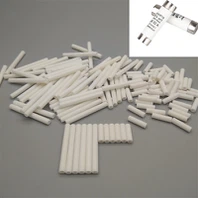Ceramic blades, often used in applications like knives or cutting tools, are made through a process called sintering. Here's a basic overview of how ceramic blades are manufactured:
Selection of Raw Materials
Ceramic blades are typically made from advanced ceramics like zirconia (ZrO2). These materials are chosen for their hardness, durability, and resistance to wear. The raw materials are usually in the form of fine powders.
Mixing and Blending
The chosen ceramic powder is mixed with a binder material, often a polymer or wax. The purpose of the binder is to hold the ceramic particles together during the shaping process.
Shaping
The mixture is then shaped into the desired blade form. This can be done through various methods like dry pressing, isostatic pressing, or injection molding. Dry pressing involves compressing the mixture into a mold, while isostatic pressing uses high-pressure fluids to shape the material.
Drying
The formed blades are then carefully dried to remove any remaining moisture. This is a crucial step to prevent cracks or defects during the subsequent sintering process.
Sintering
Sintering is the process of heating the shaped ceramic at high temperatures (typically around 1200-1600°C for zirconia) for an extended period of time. During sintering, the ceramic particles fuse together, creating a dense, solid structure. The binder material also burns off during this process, leaving behind a pure ceramic material.
Machining and Finishing
After sintering, the ceramic blanks may undergo further machining to achieve the final shape and edge. This can include processes like grinding, polishing, and honing.
Quality Control
Each blade is carefully inspected for defects, such as cracks or irregularities in the surface.
Final Inspection and Packaging
The finished blades undergo a final quality check before being packaged for distribution.
It's worth noting that the specifics of the process may vary depending on the type of ceramic material used, the intended application, and the manufacturer's proprietary techniques. Additionally, the equipment and technology used in ceramic blade production may be subject to change and improvement over time.




